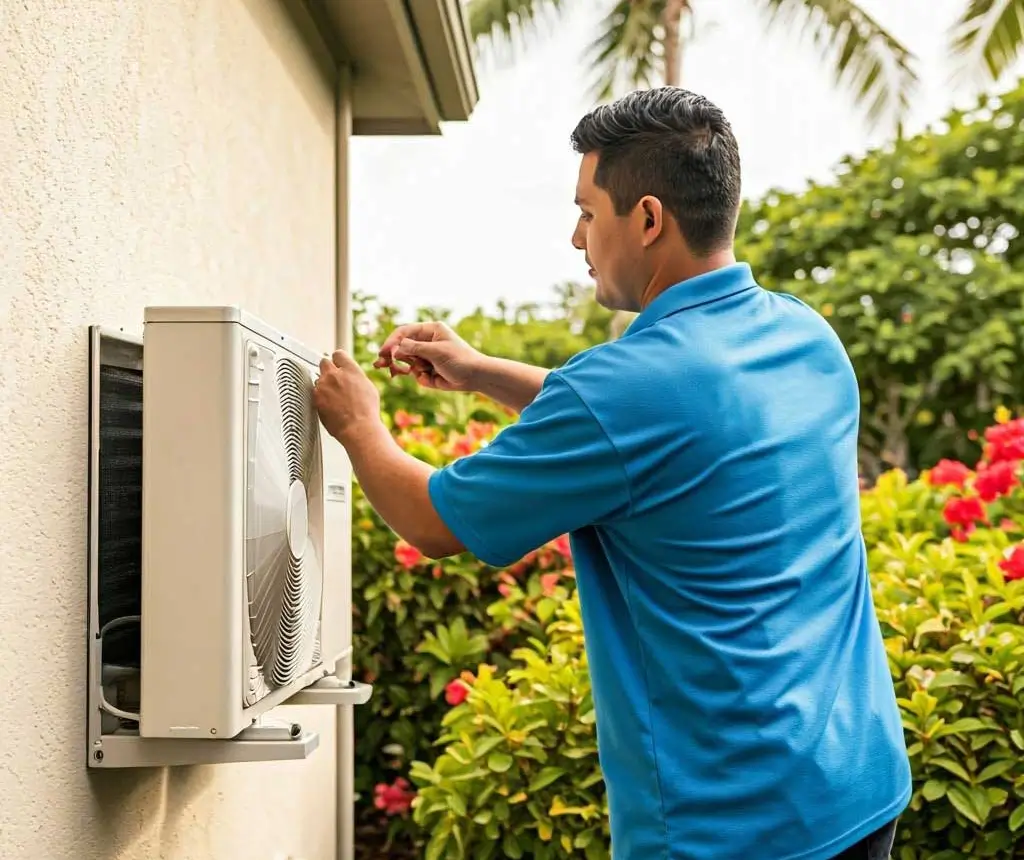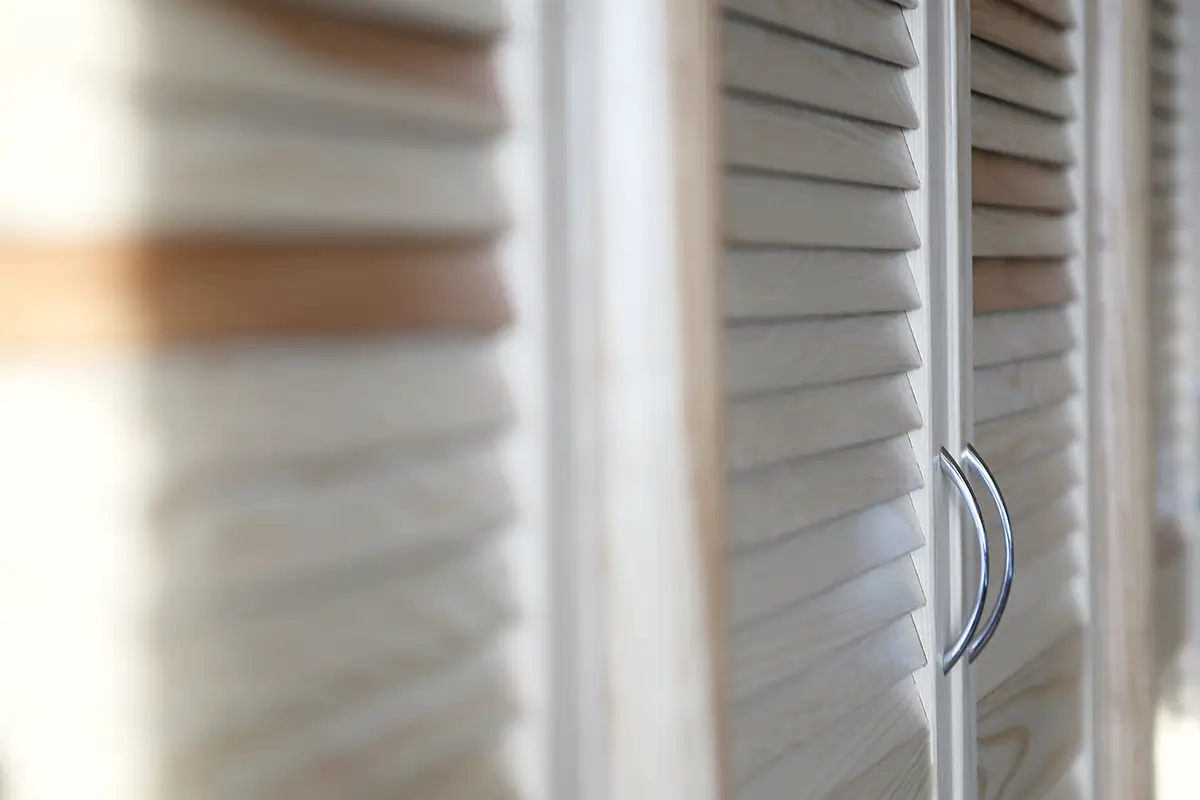If you’ve ever tried taking a shower only to be met with a trickle of unsatisfying water pressure, you know just how frustrating low water pressure can be. From simple annoyances like faucets that barely flow to bigger issues like dishwashers and washing machines not working properly, inadequate pressure impacts your whole home’s water supply.
For an island living in Hawaii, dealing with low pressure is even more of a headache. Running out of hot water too quickly due to that weak flow? Not fun when you need to rinse off after an ocean swim or salty hair day. Appliances underperforming and taking forever because of poor pressure? A needless energy waste that’s bad for your utilities and the environment.
Low water pressure isn’t just inconvenient – it’s a problem that impacts your daily quality of life, equipment lifespan, and energy costs. The good news is identifying and fixing the root cause of pressure issues doesn’t have to be complicated if you understand a few basics about residential plumbing systems.
In this guide, we’ll cover all the potential culprits behind low flow, from municipal water supply problems to leaks, obstructions, and equipment failures within your home’s pipes. You’ll learn troubleshooting methods to isolate the issue and weigh your DIY solution options versus when it’s smart to call in professional Hawaii plumbing help. By the end, you’ll be empowered to take control of your home’s water pressure once and for all.
Understanding Home Water Supply
Before we get into what causes low water pressure headaches, let’s go over the basics of how your home’s water gets to you. Down here in Hawaii, we get our water in one of two main ways – either from the county/city utilities or through a private well system out in more rural areas.
For most homes in towns and neighborhoods, you’re hooked up to the municipal water supply lines. The utility pumps water from sources like aquifers or reservoirs and pushes it through a big network of underground pipes leading right to your house’s main supply line.
That line first runs through a pressure regulator that controls just how forcefully that water flows into your plumbing system. You don’t want ultra high-pressure H2O blasting through and cracking pipes and fixtures! The regulator dials it down to a reasonable, consistent range.
If you’re out in more remote parts of the islands, chances are you’re on a well system instead. This means you’ve got a pump down in your personal well actively pulling up that ground water and feeding it into your home’s main supply lines and pipes.
In either case, whether from the county lines or a well, that main trunk line brings water into your home at a regulated pressure, usually somewhere between 45-80 PSI (pounds per square inch). From there, it branches off through a whole network of smaller piping to deliver water at the right pressures to every sink, shower, appliance, and fixture you’ve got.
Any major drop in that pressure from what you’d normally expect is a likely sign that something’s hinky with the supply lines, regulators, or equipment involved in getting that water to you. Weak flows isolated to just some fixtures can mean more localized plumbing woes too.
With that basic behind-the-scenes look at how your home’s water supply system is plumbed, we can start diving into what exactly might be behind those unsatisfying trickle issues you’ve been dealing with.
Potential Causes of Low Pressure
Now that we’ve got the water supply basics down, let’s dig into what exactly might be behind those weak, unsatisfying flows you’ve been dealing with. From issues with your municipal supply to problems with the pipes and equipment right there in your home, there are a bunch of potential culprits that can mess with your water pressure.
Water Supply Issues
If you’re on the county/city water supply lines rather than a personal well, sometimes the low pressure problem is completely out of your control. Let’s look at a few of those utility-related issues first:
Municipal Water Supply Problems
Whether it’s a main distribution line break, emergency repairs, or just higher than normal area usage during peak hours, utility companies can experience temporary issues impacting water pressure to homes. If all your neighbors are also dealing with weak flows, chances are it’s a supply problem the utility is working on.
Well Pump Malfunctions
For you well water folks, that submersible pump down in the ground is what provides your home’s water pressure and flow. As pumps age or get excessive buildup, they can fail to push water efficiently, leading to low pressure issues. Problems with the well holding tank or pressure switch can also create pressure drops.
Shut-Off Valve Problems
Sometimes the issue is as simple as a partially closed shut-off valve restricting flow into your home’s main supply line. Most homes have these shut-off valves right where the main line enters, often in a front yard box or basement. Making sure they’re fully open and clear of debris can instantly restore pressure.
Pressure Regulator Problems
Speaking of regulating pressure, let’s look at some regulator-related culprits next:
Failed/Defective Regulator
That little regulator device installed where the main line enters your home is crucial for controlling the pressure levels. If it sticks, clogs, or breaks internally, it can severely limit the amount of water pressure making it into your plumbing system.
Improper Regulator Settings
Similarly, if the regulator is an older model or was installed incorrectly, it could be dialed way too low and restricting pressure more than it should. Properly adjusting it to the right pressure output is an easy fix.
Pipe Obstructions and Clogs
Of course, another major reason for low pressure is when something is blocking or restricting the pipes that water is flowing through.
Sediment/Mineral Buildup
Over years of use, mineral and sediment buildup can gradually narrow the inside diameter of your home’s pipes. These crusty buildups can become severe enough clogs to dramatically reduce pressure and flow rates.
Corroded/Damaged Pipes
Similarly, corroded older pipes or tree root infiltration that damages sections of line can open up leaks and interior obstructions that restrict pressure. Replacing these compromised pipe sections can bring back full pressure.
Plumbing Leaks
Pipe leaks themselves are actually another potential cause of low pressure issues.
Underground Supply Leaks
Hidden underground leaks in your main supply line or branch lines can cause dramatic pressure losses before the water even reaches your home’s interior piping. Persistent wet spots in your yard may indicate these serious supply leaks.
Interior Leaks
Leaks inside your walls, ceilings, or fixtures from aging plumbing may seem minor, but even tiny cracks and openings can make a surprisingly big impact on overall water pressure when they go unchecked. Those leak points give the water an easy escape route, limiting pressure downstream.
Fixture/Appliance Problems
Finally, even if your home’s overall supply pressure is fine, problems at the individual fixture level can still manifest as low pressure issues in those specific locations.
Clogged Showerheads/Aerators
Over time, hard water mineral deposits and debris can clog up showerheads, sink aerators, and appliance hoses/lines on the fixture side. The obstructions create that trademark trickle or poor flow right at the point of use.
Appliance Valve Failures
For appliances like dishwashers, washing machines, and ice makers, problems with their individual water inlet valves or hoses can lead to inadequate pressure and flows. The appliance itself is effectively choking off its own supply.
As you can see, there’s quite a few potential culprits behind low pressure problems, from challenges with your water source to issues with the pipes, fixtures, and equipment throughout your home’s plumbing system. The real trick is using proper troubleshooting steps to isolate which underlying cause is to blame for your specific situation. Once you identify the source, you can take the right measures to get that pressure back up to full force!
Troubleshooting Methods
With all those potential causes of low pressure in mind, the next step is figuring out which one is actually behind your home’s dribbling flows and weak showers. Through a process of systematic testing and isolation, you can usually get to the bottom of what’s going on.
Using a Pressure Gauge
One of the first things you’ll want to do is get an accurate read on your home’s current water pressure with a pressure gauge. These affordable gauges simply screw onto any exterior hose bib or washing machine hookup to measure the real PSI.
Once you know the actual pressure number you’re working with, you can determine if it falls within the normal range of 45-80 PSI that most residential plumbing is designed for. Readings significantly below that point to a legitimate pressure issue worth investigating.
Visual Pipe Inspections
With the pressure gauge confirming an issue, take a close look at any exposed pipes, supplies lines, and plumbing you can readily access. Basements, crawl spaces, and utility closets are great places to scan for potential problems like:
- Water staining or moisture indicating leaks
- Signs of corrosion, mineral buildup, or rust obstructing pipes
- Improperly installed or damaged sections of piping
- Shutoff valves that may be partially closed
This visual inspection gives you the chance to identify exposed issues right off the bat before more intensive testing is needed.
Process of Elimination
From there, it’s a process of elimination to isolate where specifically the pressure problem is originating. Is it an issue with the municipal supply? An equipment fault like the pressure regulator or well pump? Or something wrong within your home’s interior plumbing itself?
Common Diagnostic Tests
There are a number of basic tests that can help you determine the source through this process of elimination:
- Shut-Off Valve Tests – Try closing off the home’s main shutoff valve to isolate the issue between your interior plumbing and the main supply. If pressure improves with it closed, the problem is exterior.
- Appliance Isolation – Disconnect appliance hoses one-by-one and check if pressure improves. If so, the fault is equipment-related.
- Fixture Isolation – Systematically close off sink, shower, and fixture shutoffs individually to see if pressure restores at other outlets when one is isolated. Debris or fixture issues create isolated low pressure.
- Exterior Observation – Have someone monitor your home’s pressure while the utility company purposefully cycles water usage up and down. Fluctuations point to a municipal supply problem.
The key is taking your time to carefully test different portions and segments of the plumbing system to narrow down the culprit through deduction. Skipping around randomly wastes effort.
With diligent observation, logical diagnostic testing, and patience to work through the process of elimination – you can usually get pretty definitive evidence about whether the low pressure is inlet-related, pipe or fixture-related, or tied to specific pieces of equipment like the pressure regulator or well system components.
That targeted insight is invaluable for then picking an appropriate, effective solution method. After all, you don’t want to go replacing pipes if the real problem ends up being a faulty regulator! Let’s take a look at those DIY fix options next.
DIY Solutions for Low Water Pressure
Once you’ve put in the work troubleshooting, inspecting, and isolating the likely culprit behind your home’s low pressure woes, it’s time to take action! Depending on the diagnosis, there are a variety of DIY fixes you can try to get that water flow back up to peak performance.
Replacing Pressure Regulators
If your testing pointed to issues with the home’s pressure regulator itself, swapping out this device is a very straightforward DIY job. Regulators go bad over time due to mineral buildup, stuck internal components, or simply old age and wear.
To replace yours, start by turning off the main shut-off valve to cut water supply. Then, unscrew the bell-shaped regulator housing using wrenches to disconnect it. Make sure to slightly open a faucet to release residual pressure before fully removing it.
When installing the fresh regulator, follow the manufacturer’s specifications for adjusting the pressure down to the proper 50-60 PSI level. Most regulate down by tightening an internal bolt. Double check that you restored full pressure and have no leaks after installation.
Clearing Clogged Pipes and Aerators
If inspections revealed calcification, mineral buildup, or debris obstructing flow through your plumbing pipes and fixtures, there are a few paths to manually clear out those clogs.
You can pick up an inexpensive air compressor kit with a blow nozzle attachment. Simply disconnect pipes or aerators, then blast compressed air through to dislodge mineral scale and sediment.
Alternatively, try utilizing a drain auger – that long, flexible metal snake tool – to manually dislodge and pull out gunk from your system. Chemical de-clogging solutions with harsh acids or bio-compounds also provide another option for dissolving organic buildup.
Clogged showerheads or faucet aerators can often be soaked in vinegar or CLR overnight to dissolve mineral blockages, then scrubbed out with an old toothbrush. Prevention is key though – consider installing whole-home filters or water softeners to cut down on this sort of buildup.
Repairing Pipe Leaks
Whether visual inspections uncovered pinhole leaks, cracks, or other plumbing repair needs, addressing leaks is crucial for maintaining good pressure levels. Leaks create easy escape routes that allow water to prematurely exit your pipes, minimizing pressure downstream.
Minor leaks can often be repaired with quick fixes like pipe repair clamps and epoxy putties to seal holes or cracks. More extensive damage may require carefully cutting out and replacing whole sections using new pipes and fittings.
For ruptures or major underground line breaks, your best bet is leaving those difficult repairs to professional plumbers with specialized tools and equipment to dig and re-pipe effectively.
Replacing Supply Lines
If your pressure issues stem from old, severely corroded, or repeatedly-failing supply line piping, a more extensive re-plumbing job may be in order. Even tiny pinholes can allow enough water loss to bring down pressure noticeably.
As a DIY job, replacing accessible branch lines to fixtures like sinks and showers isn’t too daunting for some homeowners. However, replacement of entire main supply trunks is usually best left to seasoned professionals.
Well System Solutions
Those of you on private well systems have the added complexity of needing to troubleshoot and potentially replace equipment like submersible well pumps, holding tanks, pressure tanks, and switches if they’re behind pressure shortfalls.
While replacing a pressure tank or switch may be manageable as a DIY project, pulling and re-installing well pumps down deep holes requires specific tools and expertise. Still, you can attempt minor pump repairs, filter changes, and wiring/pressure adjustments yourself if comfortable.
Whenever dealing with well systems, be very cautious of electrical safety hazards, confined space safety, and potential environmental contamination concerns. Enlist a professional well company’s help if the job seems too risky to handle alone.
Between troubleshooting and implementing solutions like these DIY fixes, most minor-to-moderate low pressure issues can get resolved without major expenses. Just be realistic about your experience level for more complex jobs – low water pressure may be a headache, but it’s not worth bodily injury or severe property damage trying to handle something far beyond your capabilities!
When to Call a Plumber
While that last section covered a lot of ground on DIY fixes you can try your hand at, there are absolutely times when the wise move is waving the white flag and calling in professional plumbing backup. As handy as you might be, some water pressure problems are just too complex or risky for homeowner-level repairs.
Major Pipe Replacements
If your existing pipe material is severely degraded, chances are good you’ll need comprehensive re-piping to permanently solve pressure problems. Whether it’s replacing the main trunk line, buried pipes, or intricate behind-the-wall branch lines, this is an area where pros with pipe-fitting expertise are essential.
Attempting to open up walls and re-route pipes is a surefire way to create further leaks and damage if you don’t know the proper techniques. Leave these major pipe overhauls to licensed plumbers with the tools and know-how to do it right.
Well Pump/Tank Replacements
As we covered, well water systems involve a lot of complex equipment that impacts pressure like pumps, holding tanks, pressure switches, and more. While minor repairs may be DIY-able, full pump or tank replacements require hauling equipment up and down deep well shafts.
This confined space work requiring specialized rigs is definitely not a homeowner’s realm of expertise! Call in experienced well professionals who have the proper training and gear for these difficult replacements.
Persistent Unexplained Issues
Sometimes you can troubleshoot every visible component and still have low pressure mysteries that stump you. When you simply can’t isolate the cause no matter what tests you run, it’s time to call in reinforcements.
Professional plumbers have a full arsenal of advanced diagnostic tools like heat sensor cameras and line inspection scopes to detect underground leaks, blockages, or cracked pipes that may be causing pressure drops. Rather than spending more time and money guessing, their expertise identifies and fixes problems fast.
Leak Detection Expertise
On that note, don’t underestimate the value of having leak detection specialists on the case if you suspect downstream leaks are the culprit behind low pressure. Their professional-grade tools and methods can pinpoint hidden leaks that are incredibly difficult for DIYers to find on their own.
From ground-penetrating radars that can “see” through slabs to inline video inspections to follow water flow, plumbers can comprehensively scan for any undetected leaks that are allowing water to escape before it reaches fixtures. Knowing exactly where to dig saves a ton of guesswork and damage.
For anything more than basic, visible plumbing repair work, it’s worth the investment to have skilled pros properly diagnose and fix low pressure problems once and for all. Consider it an ounce of prevention against further headaches and potential water damage down the road.
Preventing Future Issues
Once you’ve gotten your home’s water pressure back up to full force, it’s smart to put in a little preventative maintenance work. With some basic upkeep, you can help make sure those weak dribble days don’t come crawling back anytime soon.
One of the best preventative investments is installing a whole-home water filtration and softener system. These handy units act like a bouncer, keeping out all the hard mineral gunk and sediment that would otherwise build up over time and clog your pipes. Filtering this stuff out keeps your plumbing flowing free and clear.
You’ll also want to get on a routine annual schedule of inspecting all the visible plumbing throughout your home. Crawlspaces, basements, utility rooms – anywhere supply lines and valves are exposed. Check for any corrosion, leaks, or sketchy components that might be on their last legs. Catch those small issues early before they snowball into major calamities down the road.
If your place still has really old-school galvanized steel pipes or that polybutylene stuff that’s infamous for rupturing, you might want to just bite the bullet and re-pipe the whole system with modern materials built for the long haul. PEX tubing and copper hold up way better.
Finally, adding some air chambers or water hammer arrestors on those main supply lines helps cushion pressure spikes from water surges. These little guys act like shock absorbers to prevent damaging pipe slams over time.
With a little preventative TLC like this, taking care of your plumbing before problems pop up, you can say sayonara to those low pressure blues. It’s a whole lot cheaper and easier than tackling huge breakdowns after they happen.
Stop Dealing with Unsatisfying Water Pressure – Call in Hawai’i’s Plumbing Experts
Low water pressure is one of those insidious plumbing issues that starts as a minor inconvenience, but can quickly escalate into a major household headache. From showers that trickle more than pour, to appliances that struggle to get enough flow, to faucets that barely dribble – the effects of poor pressure reach every corner of your home.
The good news is, by understanding the common underlying causes we covered, you can take calculated steps to track down the culprit behind your low pressure woes. Through methodical testing and process of elimination, isolating whether it’s an issue with the water supply, a failing component like the pressure regulator, clogged pipes, fixture problems, or hazardous leaks gets much easier.
And in many cases, you can make the necessary repairs or upgrades yourself as a DIY project using the solution methods we outlined. With a bit of elbow grease and the right toolkit, clearing obstructions, replacing bad equipment, or even re-piping certain lines may be totally doable for handy homeowners.
But we also know there are times when the complexity, risk, or necessary skills for major plumbing repairs are best left to the professionals. That’s where the team of experienced plumbers at Steve’s Plumbing and AC Service can provide expert assistance.
With decades of experience throughout Hawaii, our technicians have the tools, training, and diagnostic capabilities to quickly identify and resolve even the trickiest cases of low water pressure. We utilize state-of-the-art leak detection equipment, video pipe inspections, and have encountered every low pressure scenario imaginable over the years.
So whether your needs are DIY advice and products or a professional solution, Steve’s Plumbing has you covered to get that water flowing at full force again. Don’t keep struggling with those weak, unsatisfying trickles a moment longer!
Give us a call today at (808) 563-4054 to schedule an assessment or ask our advice on finally fixing your low pressure for good. With our help, you can get back to enjoying the simple luxury of powerful, rejuvenating showers and leakfree plumbing that keeps up with your household’s demands.










